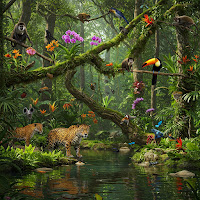Biodiversity is in crisis. According to the latest assessment, global wildlife populations declined by 73% between 1970 and 2020. The urgency to reverse this trend has never been greater. However, stopping biodiversity loss by 2030 remains an immense challenge.
At the COP16 biodiversity summit, world leaders acknowledged the severity of the situation. The conference concluded with countries backing a $200 billion annual plan for biodiversity conservation. In a historic moment, COP16 President Susana Muhamad was moved to tears, calling it a “historic day.” But will this commitment be enough?
Why Biodiversity Loss Matters
Biodiversity is the foundation of life on Earth. It provides:
Food security – Healthy ecosystems support agriculture and fisheries.
Climate stability – Forests, oceans, and wetlands act as carbon sinks.
Medical advancements – Many medicines are derived from plants and animals.
Yet, deforestation, pollution, climate change, and habitat destruction continue to drive species toward extinction.
Can We Still Reverse the Trend?
Experts agree that halting biodiversity loss requires strong global action:
Expanding protected areas to cover 30% of land and oceans by 2030.
Restoring damaged ecosystems and stopping deforestation.
Strengthening laws against poaching and illegal wildlife trade.
Redirecting subsidies from harmful industries to sustainable practices.
What You Can Do
While government policies play a key role, individuals can also make a difference:
✅ Support conservation organizations.
✅ Choose sustainable products (certified seafood, organic produce, eco-friendly goods).
✅ Reduce plastic waste and carbon footprint.
✅ Spread awareness and advocate for stronger policies.
The Path Forward
COP16’s $200 billion commitment is a step in the right direction, but real success depends on action, enforcement, and accountability. If world leaders and individuals work together, reversing biodiversity loss is still possible. The time to act is now.
Stay informed about nature, conservation, and science at Natural World 50!

Comments
Post a Comment